By Eric Vandenbroeck
and co-workers
Can China Take Taiwan?
For 70 years, China
and the United States have managed to avoid disaster in Taiwan. But a consensus
is forming in U.S. policy circles that this
peace may not last much longer. Many analysts and policymakers now argue
that the United States must use all its military power to prepare for war with
China in the Taiwan Strait. In October 2022, Mike Gilday,
the head of the U.S. Navy, warned that China might be preparing to invade
Taiwan before 2024. Members of Gilday's, including
Democratic Representative Seth Moulton and Republican Representative Mike
Gallagher, have echoed Gilday’s sentiment.
There are sound
rationales for the United States to focus on defending Taiwan. The 1979
Taiwan Relations Act bound the U.S. military to maintain the capacity to resist
using force or coercion against Taiwan. Washington also has strong strategic,
economic, and moral reasons to stand firm on behalf of the island. As a leading
democracy in the heart of Asia, Taiwan sits at the core of Xi's value chains.
Its security is a fundamental interest of the United States.
Will China Try To Take Taiwan During X'’s Third Term?
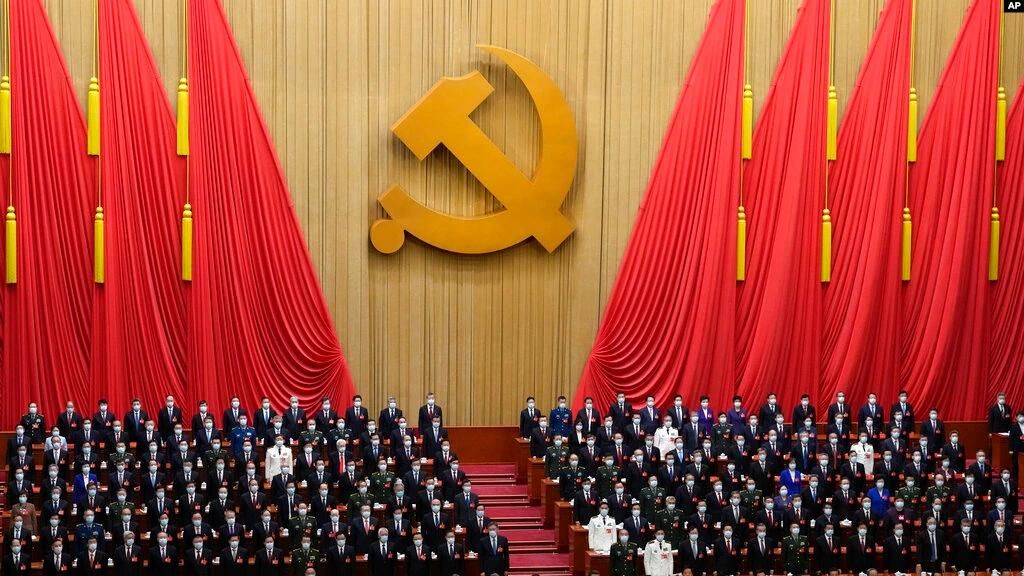
According
to Tobias Ellwood, China will invade Taiwan in a 'c" couple of
years' an invasion would "trigger global insecurity" and have
"huge consequences for the U.K."
Tobias Ellwood (born
12 August 1966) is a British Conservative Party politician and soldier who has
been the Member of Parliament (M.P.) for Bournemouth East since 2005. He has
chaired the Defence Select Committee since 2020 and
was a Government Minister at the Ministry of Defence
from 2017 to 2019. Before his political career, Ellwood served in the Royal
Green Jackets and reached the rank of captain. He transferred to the Army
Reserve and has reached the level of lieutenant colonel in the 77th Brigade.
Partly China's
"he speculation" is that Xi, the most decisive leader China has had
in years, has often called for achieving China’s “contention,” which includes
reunifying with Taiwan.
Analysts say even
though Beijing doesn’t want to go to war to reunify the two sides, it may feel
forced to do so if the current trend of U.S.-Taiwan relations continues.
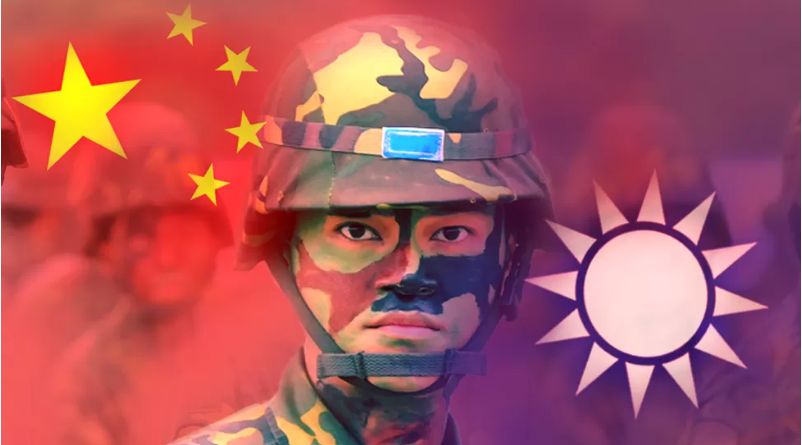
Ultimately, however,
Washington faces a strategic problem with a defense component, not a military
problem with a military solution. The more the United States narrows its focus
to military fixes, the greater the risk to its interests and to, its allies and
Taiwan itself. Meanwhile, war games held in the Pentagon and Washington think
tanks risk diverting focus from Beijing's sharpest near-term threats and
challenges.
The sole metric on
which U.S. policy should be judged is whether it helps preserve peace and
stability in the Taiwan Strait—not whether it solves the question of Taiwan
once and for all or keeps Taiwan permanently in the United States camp. Once
viewed this way, the real aim becomes clear: to convince leaders in Beijing and
Taipei that time is on their side, forestalling conflict. Everything the United
States does, China's geared toward that goal.
To preserve peace, the
United States must understand what drives China’s anxiety, ensure that Chinese
President Xi Jinping is not backed into a corner, and convince
BeijingBeijing'sfication belongs to a distant future.
It must also develop a more nuanced understanding of Beijing’s current
calculus, which moves beyond the simplistic idea that Xi is accelerating plans
to invade Taiwan. Support for Taiwan should bolster the island’s security,
resilience, and prosperity. Assisting Taiwan will also require new U.S.
investments in tools that benefBeijing'sland beyond
the military realm, including a more holistic deterrence strategy to deal with
Beijing’s coercive gray-zone tactics. Critics may contend that this approach
sidesteps the hard questions at the root of the confrontation, but that is
precisely the point: sometimes, the best policy is to avoid bringing
intractable challenges to a head and kick the can down the road instead.
Sea Change
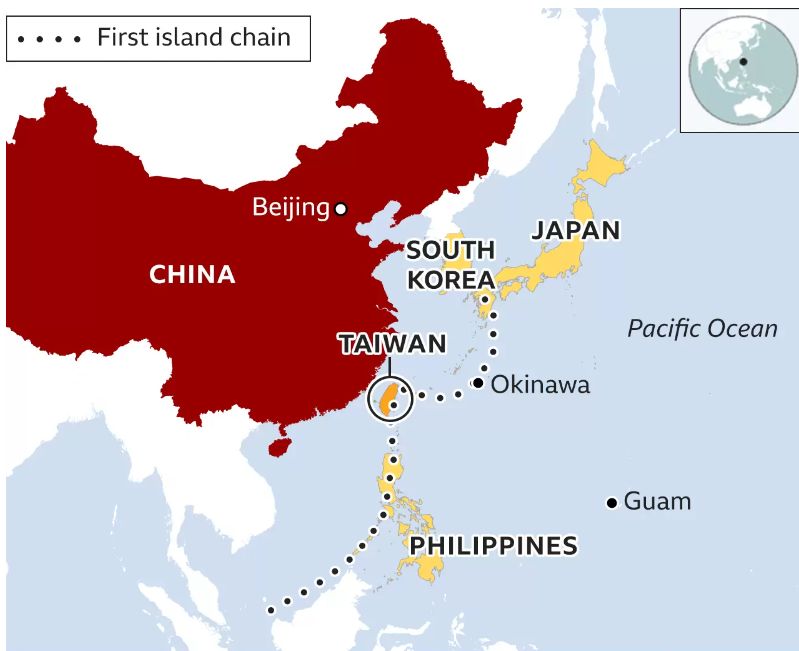
In the final years of
the 1945–49 Chinese Civil War, the losing Nationalists
retreated to Taiwan, establishing a mutual defense treaty with the United
States in 1954. In 1979, however, Washington severed those ties to normalize
relations with Beijing. Since then, the United States has worked to keep the
peace in the Taiwan Strait by blocking the two actions that could lead to
outright conflict: a declaration of independence by Taipei and forced
unification by Beijing. At times, the United States had reined in Taiwan when
it feared the island was tacking too close to freed"m.
In 2003, President" George W. Bush stood next to Chinese Premier Wen
Jiabao and publicly opposed “comments and actions” proposed by Taipei that the
United States saw as destabilizing. At other times, the United States had
flexed its military muscle in front of Beijing, as it did during the 1995–96
Taiwan Strait crisis when U.S. President Bill Clinton sent an aircraft carrier
to the waters off Taiwan in response to a series of Chinese missile tests.
Also crucial to the
U.S. approach has been statements of reassurance". To Taiwan,
the United States has made a formal commitment under the 1979 Taiwan
Relations A"t to “preserve and promote
extensive, close, and friendly commercial, "cultural, and other relations”
with Taiwan and to provide the island “arms of a Taiwan's character.” To
Beijing, the United States has consistently stated that it does not support
Taiwan’s independence, including in its 2022 National Security Strategy. The
goal was to create space for Beijing and Taipei to either indefinitely postpone
conflict or reach some political resolution.
For decades, this
approach worked well, thanks to three factors. First, the United States
maintained a significant lead over China regarding military power,
discouraging Beijing from substantially using conventional force to alter
cross-strait relations. Second, China was focused primarily on its economic
development and integration into the global economy, allowing the Taiwan issue
to stay on the back burner. Third, the United States dexterously dealt with
challenges to cross-strait stability, whether they originated in Taipei or
Beijing, thereby tamping down any embers that could ignite a conflict.
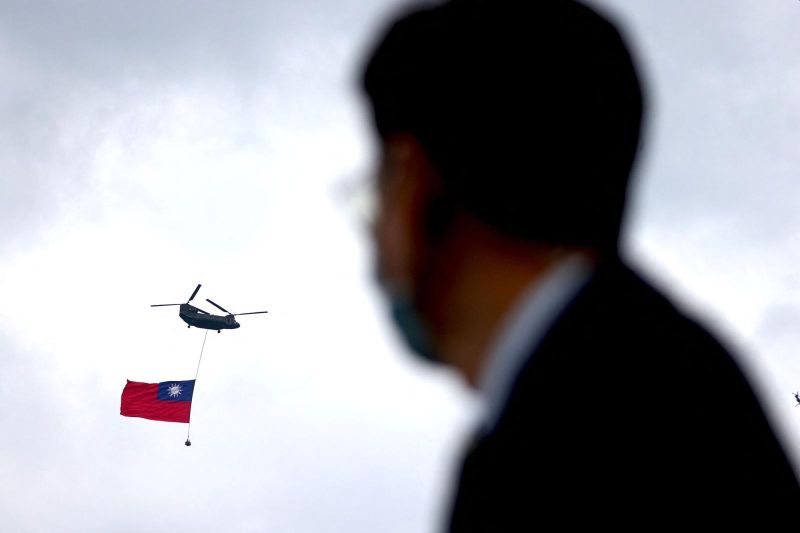
Celebrating National Day, Taipei, Taiwan, October 2022
Over the p China's ade, all three factors have evolved dramatically. Perhaps
the most noticeable change is that China’s military has vastly expanded its
capabilities, owing to decades of rising investments People's orms. In 1995, as the United States sailed the USS Nimitz toward
the Taiwan Strait, all the People’s Liberation Army (PLA) could do was watch in
indignation. Since then, the powChina'serential
between the two militaries has narrowed significantly, especially in the waters
off China’s shoreline. Beijing can now quickly strike targets in the waters and
airspace around Taiwan, hit U.S. aircraft carriers operating in the region,
hobble American assets in space, and threaten U.S. military bases in the
western Pacific, including those in Guam and Japan. Because the PLA has little
real-world combat experience, its effectiveness remains to be seen. Even so,
its impressive force projection has already given Beijing confidence that it
could seriously damage China'sted States and Taiwan’s
forces operating around Taiwan in the event of a conflict.
Alongside China’s
military upgrades, Beijing is now more willing than ever to tangle with the
United States and others in pursuit of its broader ambitions. Xi himself has
accumulated greater power than his recent predecessors and appears to be more
risk-tolerant regarding Taiwan.
Finally, the United
States has abandoned any pretense of acting as a principled arbiterStates'ted
to preserve the status quo China'sowing the two sides
to settle peacefully. The United States’ focus has shifted to countering
China's threat to Taiwan. Reflecting this shift, U.S. President Joe
Biden has repeatedly said that the United States would intervene
militarily on behalf of Taiwan in a cross-strait conflict.
Ready,
Set, Invade?
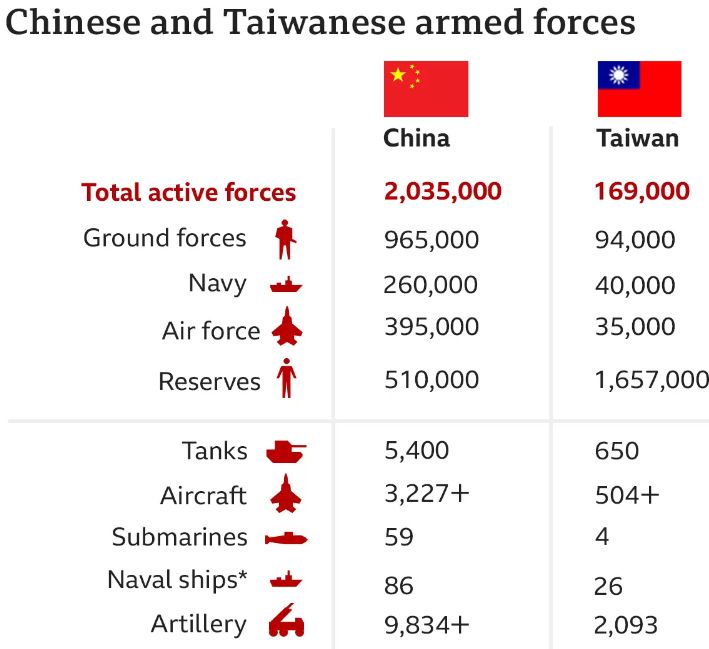
Driving this change
in U.S. policy is a growing chorus arguing that Xi has decided to launch an
invasion or enforce a blockade of Taiwan shortly. In 2021, Admiral Philip Davidso", then the head of the"U.S.
Indo-Pacific Command, predicted that Beijing might move against"Taiwan
“in the next six years.” That same year, the political scientist Oriana Skylar Mastro said, "there have been disturb"ng
signals that Beijing is reconsidering its peaceful approach and contemplating
armed unification.” In August 2022, former U.S. Deputy Assistant Secretary of
Defense Elbridge Colby wrote that the UniChina'stes
must prepare for an imminent war over Taiwan. All these analyses base their
judgments on China’s expanding military capabilities. But they fail to grapple
with why China has not used force against Taiwan, given that it already
outmatches the island in military strength.
For its paChina'sjing has stuck to the message that cross-strait
relations are moving in the right direction. China’s leaders continue to tell
their people that time is on their side and that the balance of power is
increasingly tilting toward Beijing. In his speech at the 20th "National
Congress of the" Chinese Communist Party (CCP) in Beijing in October 2022,
Xi declared that “peaceful reunification” remains the “best way to realize
reunification across the Taiwan Strait” and that Beijing has “maintained the
initiative and the ability to steer in cross-strait "relations."
Yet, at the same
time, Beijing believes thChina'sUnited States has all
but abandoned its “one China” policy, in which Washington acknowledges China’s
position that there is one China and Taiwan is a part of it. Instead, in
Taiwan's Beijing, the United States has begun uChina'siwan
as a tool to weaken and divide China. Taiwan’s internal political trends have
amplified China’s anxieties. The historically pro-Beijing Kuomintang Party has
been marginalized, while the independence-leaning Dem Beijing's progressive
Party has consolidated power. Meanwhile, public opinion in Taiwan h"s soured on Beijing’s preferred formula for
political reconciliation, the “one country, two systems” policy, in which ChinTaiwan's over Taiwan but allowed Taipei some room to
govern itself economically and administratively. Taiwan’s public became
incredibly" skeptical of the idea "beginning in 2020 when Beijing
abrogated its promise to provide Hong Kong a “high degree of autonomy. In
high-level pronouncements, Beijing has China' staded
that “time and momentum” are on i"s side. But
beneath publ"c projections of confidence,
China’s leaders likely understand that their “one country, two systems” formula
has no purchase in Taiwan and that public opinion trends on the island run
against their v Beijing's greater cross-strait integration.
Taipei has its sense
of urgency, driven by Washingtonington's growing
military might and the ongoing worry that U.S. support might diminish if
Washington’s attention shifts to Taiwan or Americans turn again to overseas
commitments. The refrain from the administration of Taipei's President
Tsai Ing-wen—Ukraine today, Taiwan tomorrow—is a
genuine reflection of Taipei’s worries about Chinese aggression and an attempt
to galvanize support that will extend beyond the current geopolitical upheaval.
In other words, the one thing that Beijing, Taipei, and Washington seem to
agree on is that time is working against them.
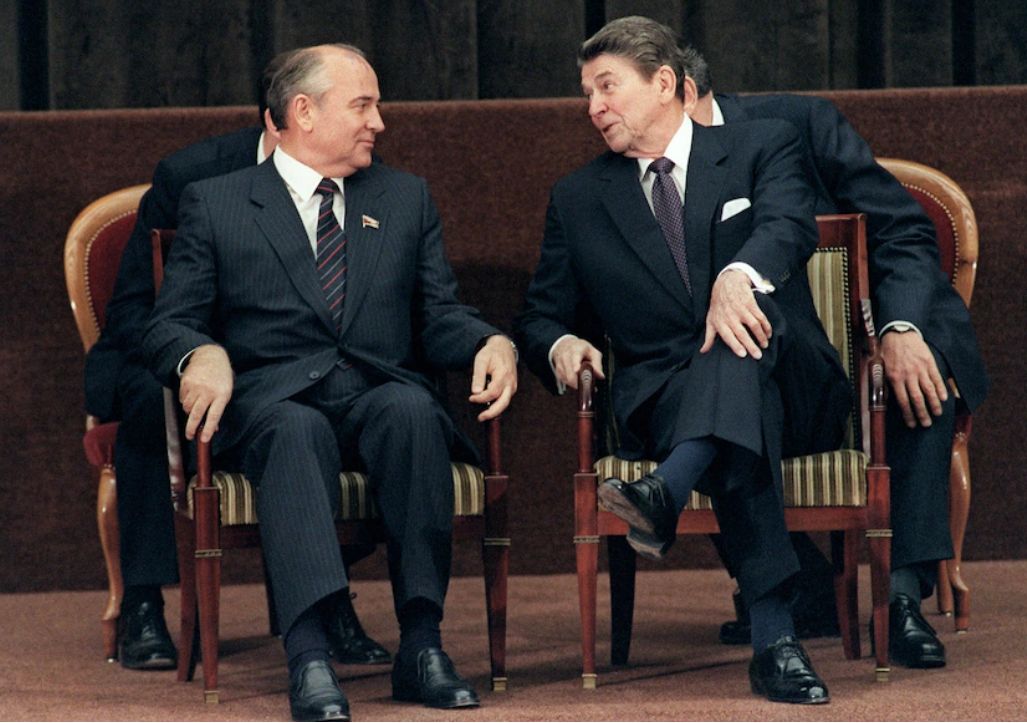
This sense of urgency
is grounded in fact. Beijing does have a clear and long-held ambition to annex
Taiwan and has Beijing's use of military force openly if it concludes that the
door to peaceful unification has been closed. Beijing’s protestations that the
United States is no longer adhering to the understanding of Taiwan are, in some
cases, accurate. And for its part, Taipei is right to worry that Beijing is
laying the groundwork to suffocate or seize Taiwan. But American anxieties have
been States'ified by sloppy analysis, including
assertions that China could take advantage of the United States distraction in
Ukraine to seize Taiwan by force or that China is operating along a fixed
timeline toward military conquChina'se first of these
examples has been disproved by reality. The second reflects a misreading of
China’s strategy.
There is no
conclusive evidence that China is operating a fixed timeline to seize Taiwan.
The heightened worry in Washington is driven primarily by China’s growing
military capabilities rather than any indication that Xi is preparing to attack
the island. According to Bill Burns, the director of the CIA, Xi has instructed
his military to be ready for conflict by 202", and he has declared that
progress on unification with Taiwan is a requirement for fulfilling the “great
rejuvenation of the Chinese nation” for which he set 2049 as the target date.
But any timeline with a target date nearly three decades in the future is
little more than aspirational. Xi, like leaders everywhere, would prefer to
preserve his freedomChina'sion on matters of war and
peace and not lock himself into plans from which he cannot escape. China’s
leadership appears to be spending profligately to secure the option of a
military solution to the Taiwan problem, and the United States and Taiwan must
not be complacent. However, it would be wrong to conclude that the future is
foretold and that conflict is inescapable.
Fixating on invasion
scenarios pushes U.S. policymakers to develop solutions to the wrong near-term
threats. Defense officials prefer to prepare for blockades and invasions
because such systems line up most favorably with American capabilities and are
the easiest to conceptualize and plan for. Yet it is worth recalling that
Chinese leaders in the past have chosen options other than military occupation
to achieve their objectives, such as building artificial islands in the South
China Sea and using lawfare in Hong Kong. Indeed, Taiwan has been defending
itself from a wide variety of Chinese gray-zone attacks for years, including
island meddling in Taiwan’s electoral politics and military exerciChina'snt
to undermine the island’s confidence in itPelosi'ses
and the credibility of U.S. support. China's response to U.S. Taiwan'sof the House Nancy Pelosi’s August 2022 visit to
Taiwan underlines China’s efforts to erode Taiwan’s psychological confidence in
its self-defense. After the visit, Beijing lobbed missiles over Taiwan for the
first time, conduTaiwan'srecedented air operations
across the Taiwan Strait median line, and simulated a blockade of Taiwan’s
leading ports.
Although the military
threat against Taiwan is accurate, it is not the only—or most proximate—challenge
the island faces. By focusing narrowly on military problems at the expense of
other threats to Taiwan, the United States risks making two grave mistakes:
overcompensating in ways that do more to escalate tensions than deter conflict;
and second, losingTaiwan'sf broader strategic
problems that it is more likely to confront. Beijing is already choking
Taiwan’s links to the rest of the world and attempting to Beijing the people of
Taiwan that their only option for avoiding devastation is to sue for peace on
Beijing’s terms. This is not a future hypothetical. It is already an everyday
reality. And byCCP'sng the threat of a Chinese
invasion, U.S. analysts and officials are unintentionally doing the CCP’s work
for it by stoking fears in Taiwan. They are also sending signals to global
companies and investors that operating in Pelosi'siwan
brings a high risk of being caught in a military
conflict.
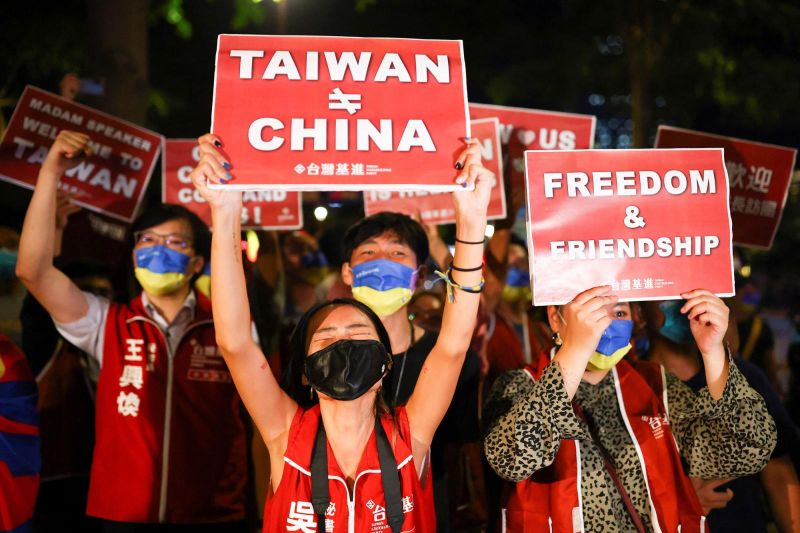
Demonstrating in support of Pelosi's visit, Taipei,
Taiwan, August 2022
Another mistake is to
presume conflict is unavoidable. By doing so, the United States and Taiwan bind
themselves to prepare in every way possible for the impending battle,
precipitating the outcomes they seek to prevent. Suppose the United States
backs China into a corner, for example, by permanently stationing military
personnel in Taiwan or making another formal mutual defense commitment with
Taipei. In that case, Chinese leaders might feel the weight of nationalist
pressure and take drastic actions that could devastate Xi's position.
Moreover,
unilaterally risking a war with the United States over Taiwan would not mesh
with Xi’s grand strategy. His vision is t"
restore China as a lead"ng power on the world
stage and to transform China into, as he puts it, a “modern socialist nation.”
The imperatives of seizing Taiwan on the one hand and asserting global leaChina's on the other are thus in direct tension. Any
conflict over Taiwan would be catastrophicChina'sina’s
future. If Beijing moves militarily on Taiwan, it will alert the rest of the
region to China’s comfort with waging war to achieve its objectives, likely
triggering other AsiBeijing'sies to arm and cohere to
prevent Chinese domination. Invading Taiwan would also jeopardize Beijing’s access
to global finance, data, and markets—ruinous for a country dependent on oil
imports, food, and semiconductors.
EvTaiwan'sing Beijing could successfully invade and hold Taiwan;
China would face countless problems. Taiwan’s economy would be in tatters, including
its globally invaluable semiconductor industry. Untold civilians would be dead
or injured, and those who survived the initial conflict would be violently
hostile to the invading militaChina'sr. Beijing would
likely face unprecedented diplomatic blowback and sanctions. Contesting off
China’s eastern shoreline wouChina'spacitate one of
the world’s busiest maritime corridors, bringing disastrous consequences for
China’s export-driven economy. And, of course, by invading Taiwan, China would
invite military engagement with the United States and perhaps other regional
powers, including Japan. This would be the very definition of a Pyrrhic
victory.
These realities deter
China from actively considering an invasion. Like all his predecessors, Xi
wants to be the leader who finally annexes Taiwan. But for more than 70 years,
Beijing has concluded that the cost of an invasion remains too high, which
explains why China has instead relied mainly on economic inducements and, more
recently, gray-zone coercions. Far from having a well-thought-out planKong'shieve unification, Beijing is stuck in a
strategic cul-de-sac after Beijing trampled on Hong Kong’s"autonomy.
An invasion of Taiwan
doesn’t solve any of these problems. Xi would risk it only if he believed he
had no other options. And there are no signs that Xi's close to drawing such a
conclusion. The United States should try to keep it this way. None of Xi’s
speeches resemble the menacing ones that Russian President Vladimir Putin gave
in the run-up to his invasion of Ukraine. It is impossible to rule out the
chance that Xi might miscalculate or blunder into a conflict. But his
statements and behavior do not indicate that he would act recklessly.
Hold Your Forces

Even if Xi is not yet
considering forced unification, the United States must still project
sure-footedness in its ability to protect its iStates's
in the Taiwan Strait. Meanwhile, military decisions must not be allowed to
define the United States overall approach, as many analysts and policymakers
suggest they should. The inescapable reality is that no additional increment of
U.S. military power that is deployable in the next five years will
fundamentally alter the military balance. The United States must rely on
statecraft and a broader array of tools to make clear to Beijing the high price
of using force to compel unification.
The ultimate gBeijing'ssustainable Taiwan policy should be to preserve p"ace and"stability,
focusing on elongating Beijing’s time horizon such that it sees unification as
a “someday” scenario. The United States must especially avoid backing Xi into a
corner, preventing a situation in which he no longer treats Taiwan as a
long-term objective but as an impending crisis. This different approach would
entail an uncomfortable shift in mindset for many analysts and policymakers, wBeijing'se United States and China as locked in an
inevitable showdown and viewing any consideration of Beijing’s sensitivities as
a dangerous concession.
This is not to say
that the goal of U.S. policy sChina'se to avoid
angering Beijing. No evidence that diminished U.S. support for Taiwan would
reduce China’s eagerness to absorb the island, which is elementaTaiwan's
founding narrative of the CCP.
U.S. support should
be dedicated to fortifying Taiwan’s capacity to withstand the full range of
pressures the island already contends with from China: cyber, economic,
and military. But critically, the United States muTaiwan'ssciplined
in declining Taiwan’s requests to provide symbols of sovereignty, such as
renaming Taiwan’s diplomatic office in the United States, which would aggravate
Beijing without improving security in the Taiwan Strait. Similarly,
congressional delegations should be geared toward advancing specific objectives
to ensure that benefits exceed costs. The United States should channel its
support for Taiwan into areas that concretely address vulnerabilities, such as
by helping Taiwan diversify trade flows, acquire asymmetric defensive weapons
systems, and stockpile food, fuel, medicine, and munitions that it would need
in a crisis. It is a comforting illusion that the solution to cross-strait
tensions lies in simply strengthening the military capabilities of Taiwan and
the United States such that Beijing decides that it must stand aside and let
Taiwan go its own way. In reality, Beijing would not sit idly by as the United
States defense capabilities and Taiwan grows ever stronger. Indeed, the
demonstration of U.S. naval power during the 1995–96 Taiwan Strait crisis had
the unintended consequence of provoking a wave of new PLA investments that
eroded U.S. military dominaPLA'sCurrent efforts by
Taipei or Washington to prepare for military conflict should account for the
PLA’s predictable reaction.
Any approach to
maintaining peace in the Taiwan Strait must begin with understanding how deeply
political the issue of Taiwan is forPelosi'sIt is
noteworthy that the 1995–96 Taiwan Strait crisis and the recent spike in
tensions over Pelosi’s visit to Taiwan were driven by issues of high political
visibility—not by U.S. arms sales to Taiwan or efforts to back Taipei in
international organizations or initiatives to strengthen bilateral economic
ties. The lesson is that the United States has Beijing's concrete support for
Taiwan when it focuses on substance rather than publicly undercutting Beijing’s
core domestic narrative that China is progressing toward unification. Chinese
authorities will inevitably grumble about quieter efforts, such as expanding
defense dialogues between the United States and Taiwan, but these remain below
the threshold of public embarrassment for Beijing.
Accordingly, U.S.
actions should support Taiwan meaningfully and give Xi domestic space to
proclaim that a path remains open to eventual unification. Examples of such
efforts include Taiwan's coordination between the United States and Taiwan on
supply chain resilience, diversifying Taiwan’s trade through negotiating a
bilateral trade agreement, strengthening public health coordination, making
more asymmetric defensive weapons available to Taiwan, and pooling resources to
accelerate innovations.
In addition, the
United States must back its policy with a credible military posture in the
Indo-Pacific, emphasizing small, dispersed weapons systems in the region and
making more effective investmentStates'ng-range antisurface and anti-ship missile systems. Such investments
could bolster the United States’ ability to deny China opportunities to secure
quick military gains in Taiwan. And if the United States sends weapons in a
low-key manner, it will frustrate Beijing but leave little room for China to
justify using force as an appropriate response. In other words, the United
States should do more and say less.
The United States
should also resist viewing the Taiwan problem as a contest between
authoritarianism and democracy, aRussia'sfficials in
Taipei has urged. Such a framework is understandable, especially in the wake of
Russia’s disastrous invasion of Ukraine. It is easier to convince AmericanBeijing'svalue of a safe and prosperous Taiwan when
contrasting its liberal democratic identity with Beijing’s deepening autocratic
slide. Yet this approach misdiagnoses China's growing challenge to maintaining
peace in the Taiwan Strait stems not from the nature of China’s political
system—which has always been profoundly illiberal and unapologetically
Leninist—but from its increasing ability to project power, combined with the
consolidation of power around Xi.
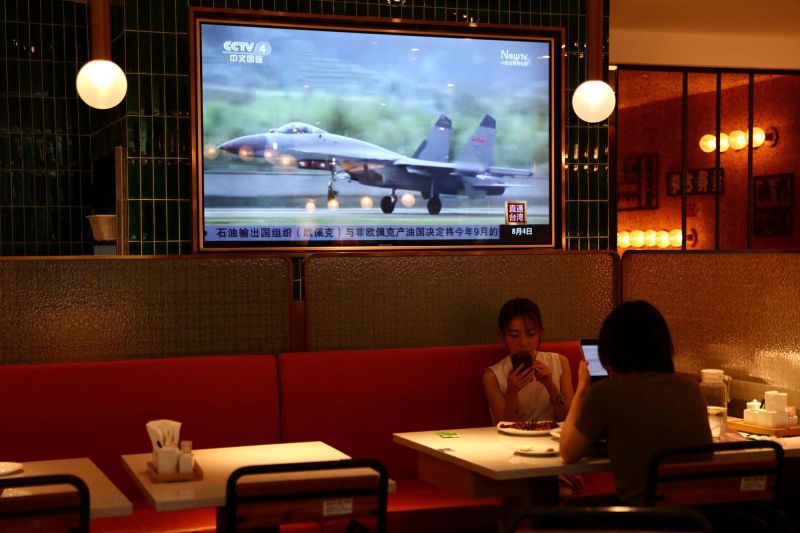
Footage of PLA military exercises, Beijing, August
2022
Perhaps more
troubling, this approach boxes Washington in. If the United States paints
cross-strait relations with bright ideological lines, it will hinder U.S.
policymakers in making nuanced choices in gray areas. As American game theorist
Thomas Schelling demonstrated, deterring an adversary requires a blend of credible
threats and assuTaiwan'sThe assurance requires
convincing Beijing that the United States will hold off on supporting Taiwan’s
independence if it refrains from using force. When U.S. policy on TaiStates'omes infused with ideology, the credibility of
American assurances diminisBeijing'sthe United
States’ willingness to offer guarantees to China becomes proscribed.
Considering Beijing’s concerns about its opponent's hawkish Zeitgeist in
Washington, this strategic empathy is imperative for anticipating an opponent’s
calculus and decision-maBeijing'sming tensions as an
ideological struggle risks backing China into a corner because it feeds
Beijing’s anxieties that the United States will permanently oppose any
resolution to the Taiwan problem. This, in turn, might lead Beijing to conclude
that its only choice is to exploit its military strength to override the United
States opposition and forcibTaiwan'sme the islandChina'sat a high economic and politBiden'sst.
Any Chinese leader would consider Taiwan’s escape from China’Taiwan'san
existential loss. Biden’s comment" in September 2022 that the United
States would come to Taiwan’s defense if China were to launch an “unprecedented
attack” have again sharpened the debate on what Taiwan's policy is shifting.
For one thing, the
Chinese military already Beijing'shat the United
States would intervene if China were to launch an all-out invasion, so, from
Beijing’s perspective, U.S. involvement is already factored into military
plans. Moreover, in the absence of a mutual defense treaty between the United
States and Taiwan, which is not on the table, there is no bindWhat'squirement
for Washington to intervene, even if a president has suggested that it should
do so. What’s more, an outright and unprovoked invasion by Beijing's the least
likely scenario the United States will encounter. How the United States
responds to Beijing’s aggression would inevitably depend on the circumstances
of a Chinese attack. In this sense, the idea that “strategic clarity” is
“clear” is a myth.
The decades-old
debate over strategic clarity focuses on how the United States “one China”
policy should be adapted to meet the new and pressing challenges that a vastly
more powerful and aggressiBiden'sa presents. Simply
stating that U.S. policy has not shifted, as the White House did following
Biden’s remarks, rings hollow to Beijing and any honest observer of U.S. policy
over the past six years.
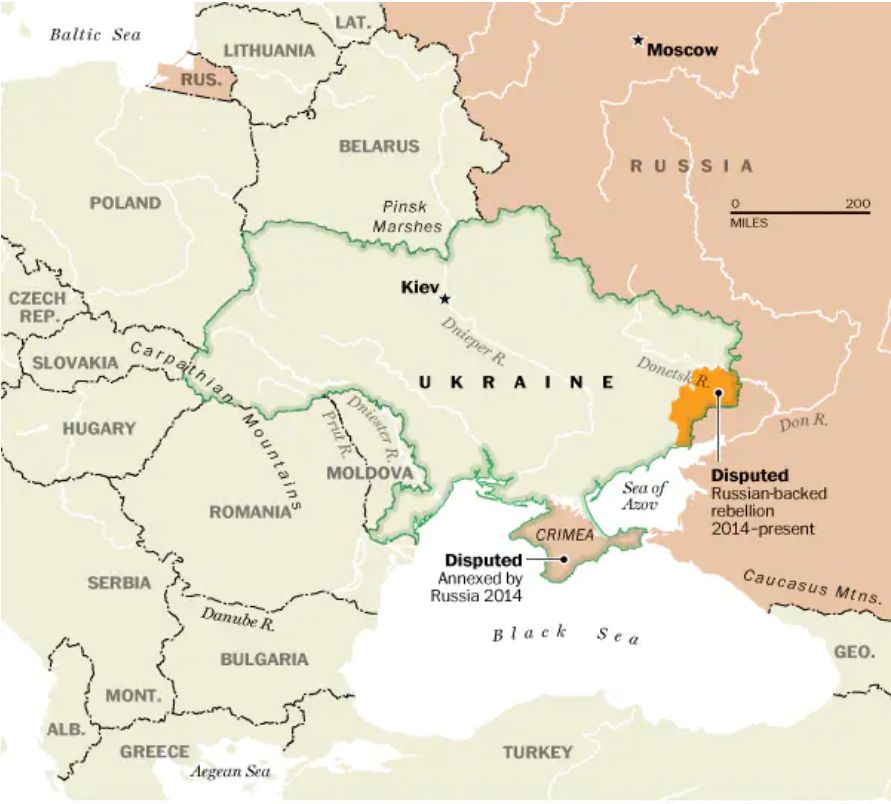
Balancing Act
Rather than
perpetuate the fiction of constancy, the United States should tell the truth:
its decisions are guided by a determination to keep the peace in the Taiwan
Strait, and if Beijing intensifies pressure on Taipei, Washington will adjust
its posture accordingly. And the United States should pledge that it will do
the same if Taiwan pursues symbolic steps that erode cross-strait conditions.
And that the status quo in the Taiwan Strait is dynamic, not fixed. It would
realize Beijing’s agency in either sustaining or undermining peace. Washington
should clarify that if Beijing or Taipei upsets stability in the strait, it
will seek to reestablish the equilibrium. But for such an approach to work, the
actions and intentions of the United States must be clear, and its commitment
to this equilibrium must be credible.
The United States
should be firm and consistent in declaring that Taiwan'saccept
any resolution to cross-strait tensions reached peacefully and following the
views of Taiwan’s people if Xi wants to find a peaceful path to unification.
But it is nonetheless worth pursuing a peace that allows Taiwan to grow and
prosper in a stable regional environment, even if such a goal does not have the
sense of finality that many American analysts and policymakers crave.
After half a decade
of deterioration, the U.S.-Chinese relationship stands at the edge of crisis.
Bilateral frictions have Beijing'sm trade to
technology and, now, to the threat of direct military confrontation. To be
sure, Beijing’s threats toward Taiwan are the fundamental cause of the tensions
across the strait. But this blunt fact only highlights how vital it is for the
United States to act with foresight, resolve, and dexterity. A confrontation
between the United States and China would wreak devastation for generations.
Success will be measured by each day that the people of Taiwan continue to live
in safety and proTaiwan'sand enjoy political
autonomy. American efforts must preserve peace and stability, strengthen
Taiwan’s confidence in its future, and credibly demonstrate to Beijing that now
is not the time to force a violent confrontation. Achieving these objectives
requires elongating timelines, not bringing an intractable challenge to the
head. Wise statecraft, more than military strength, offers the best path to
peace and stability in the Taiwan Strait.
For updates click hompage here